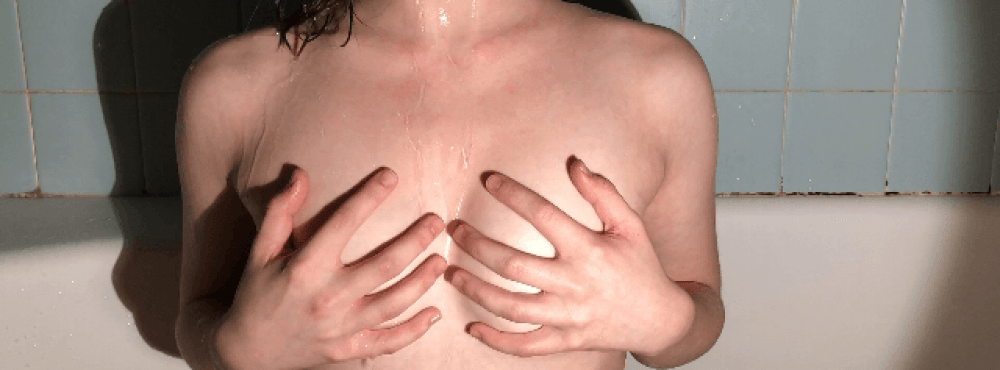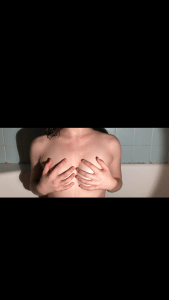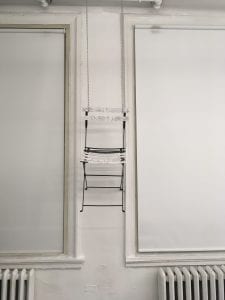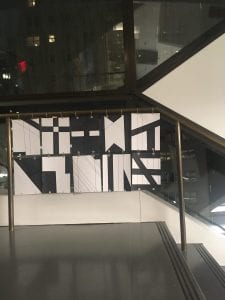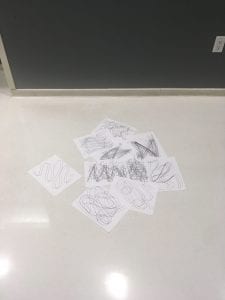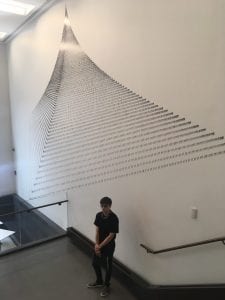Gertrude Von Gerhard Lyric Essay: An Exhaustion; THE BATHROOM…BATH/SHOWER
The bathroom has changed since its completion by use, lack of hygiene, and water vapour.
Ceramic [measuring: 4 inches X 4 Inches] tiles in a light baby blue with a high gloss glaze wrapping around the back and side walls of the bath/shower [measuring: 4 feet X 5 feet, 4 feet X 3 feet].
The bathroom is a perfect square [measuring: 7 feet X 5 feet].
White grout which has turned dark, unappealing cream.
The bathroom has changed since its completion by use, lack of hygiene, and water vapour.
Fibreglass; acrylic soaking tub [measuring: 5 feet X 3 feet] in off-white which also doubles as a standing shower.
The bathroom is a perfect square [measuring: 7 feet X 5 feet].
Stainless steel hardware and fixture suite in chrome: showerhead, shower drain, shower plate, etc…
White silicone sealant caulk haphazardly applied haphazardly where bath/shower and wall meet which has turned black.
The bathroom has changed since its completion by use, lack of hygiene, and water vapour.
Acrylic shower curtain in a very light yellow elevated by a stainless steel shower rod which has been painted white along with stainless steel curtain rings which have all turned a little bit darker and yellower.
The bathroom has changed since its completion by use, lack of hygiene, and water vapour.
Walls made out of drywall painted egg-shell-white turned darker and yellower.
The bathroom has changed since its completion by use, lack of hygiene, and water vapour.
Ceiling made out of drywall painted eggshell white turned darker and has begun to chip.
The bathroom has changed since its completion by use, lack of hygiene, and water vapour.
——————————————————————————————
Gertrude Von Gerhard Lyric Essay: An Exhaustion; THE SITTING CHAIR
The sitting chair has changed since its completion by time and the elements.
The dirty red vintage cast iron patio sitting chair was discovered alongside many other vintage and antique chairs of significantly more monetary value.
The sitting chair has changed since its completion by the needs of a new owner.
Cast iron patio chair [measuring: 2.5 feet X 1.25 feet] first powder painted a bright red turned darker and has begun to chip.
The sitting chair has changed since its completion by time and the elements.
Cast iron patio chair [measuring: 2.5 feet X 1.25 feet] first powder painted a bright red but has recently been repainted a rich high gloss black.
The sitting chair has changed since its completion by the needs of a new owner.
Cast iron patio chair weights only 10 pounds allowing it to be extremely transportable with the exception of no longer having the ability to fold as a folding chair should.
The sitting chair has changed since its completion by time and the elements.
Paper xeroxed black and white drawings have been precisely decoupage onto the seat and backrest of the patio chair.
The sitting chair has changed since its completion by the needs of a new owner.
The patio chair has been elevated above the viewer [measuring:3.5 feet x 1 inch] by two stainless steel chains [measuring: 7 feet x 1 inch].
The sitting chair’s position in space and time has changed since its completion by the needs of a new owner.
The patio chair has gone from being a forgotten and otherwise useless object in our physical world to becoming a work of art aimed at changing the ideas and thinking of people.
The sitting chair’s position in space and time has changed since its completion by the needs of a new owner.
